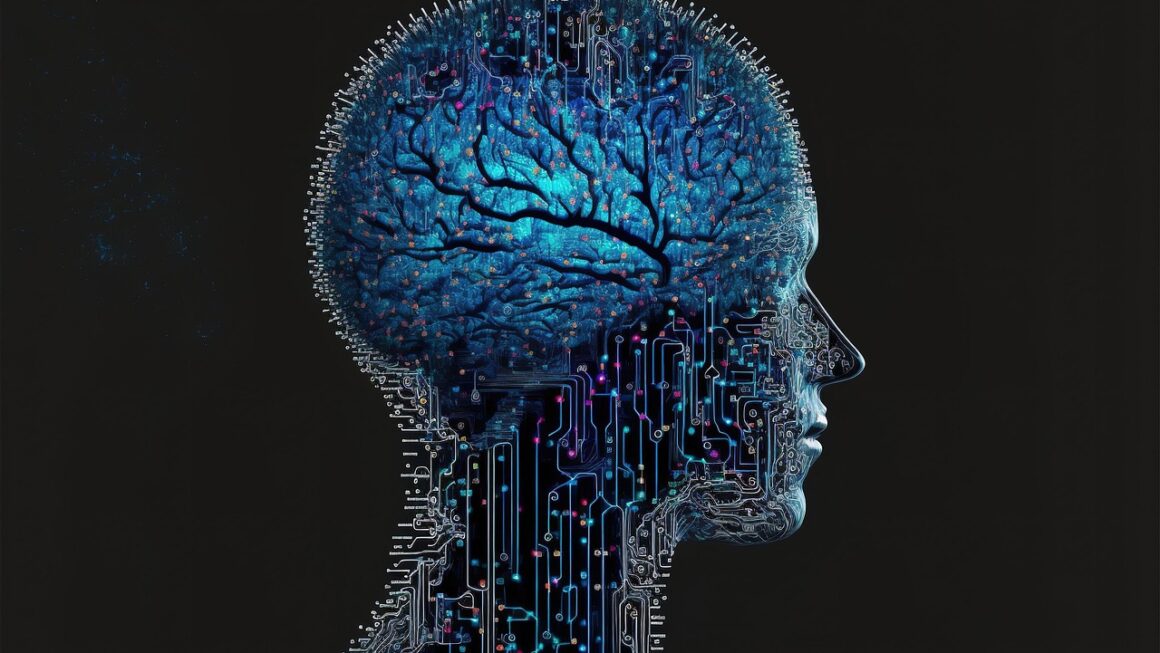Web3 is revolutionizing the internet as we know it, moving beyond centralized control to a decentralized, user-centric experience. This shift is powered by innovative Web3 applications (dApps) built on blockchain technology. But what exactly are these dApps, and how are they transforming industries? This article dives into the world of Web3 apps, exploring their features, benefits, and real-world applications, so you can understand the future of the internet.
What are Web3 Apps?
Understanding Decentralized Applications
Web3 apps, or decentralized applications (dApps), are applications that run on a decentralized network, typically a blockchain. Unlike traditional apps that rely on centralized servers, dApps operate on a peer-to-peer network, making them more transparent, secure, and resistant to censorship. They use smart contracts to automate agreements and transactions, removing the need for intermediaries.
- Decentralized: No single entity controls the application.
- Open Source: The codebase is typically open for anyone to inspect and contribute.
- Transparent: All transactions are recorded on the blockchain and publicly verifiable.
- Immutable: Data stored on the blockchain cannot be easily altered.
- Autonomous: Operates via smart contracts without human intervention after deployment.
Key Differences Between Web2 and Web3 Apps
Traditional Web2 apps are typically controlled by a single entity, leading to concerns about data privacy and censorship. Web3 apps address these issues by:
- Data Ownership: Users control their own data rather than relying on a centralized database controlled by a company.
- Reduced Censorship: Because the application is decentralized, it is more difficult for any single entity to shut it down or censor content.
- Increased Transparency: The open-source nature of many dApps allows users to verify the code and understand how the application works.
- Monetization: Users can earn tokens or cryptocurrency by participating in the network, incentivizing engagement.
Benefits of Using Web3 Apps
Security and Transparency
One of the primary advantages of Web3 apps is enhanced security. Since transactions are recorded on a distributed ledger, they are much harder to tamper with. This leads to greater transparency, as anyone can verify the transactions on the blockchain.
- Immutable Records: Once a transaction is recorded, it cannot be easily altered or deleted.
- Cryptography: Advanced cryptographic techniques secure the transactions and user data.
- Reduced Risk of Hacking: Distributed nature minimizes the impact of a single point of failure, reducing the risk of successful hacks.
Data Ownership and Control
Web3 empowers users by giving them control over their own data. Unlike traditional apps that collect and monetize user data, Web3 apps often allow users to decide how their data is used and shared.
- Self-Sovereign Identity: Users can create and manage their digital identities without relying on centralized authorities.
- Data Monetization: Users have the option to monetize their data, rewarding them for participation.
- Privacy-Focused: dApps can be designed to minimize data collection and protect user privacy.
Innovation and New Economic Models
Web3 apps foster innovation by enabling new economic models and decentralized governance. DAOs (Decentralized Autonomous Organizations) are one example, allowing communities to collectively manage resources and make decisions.
- DAOs (Decentralized Autonomous Organizations): Enable community-led governance and decision-making.
- Tokenomics: Using cryptocurrencies and tokens to incentivize participation and reward users.
- Decentralized Finance (DeFi): Creating new financial services and products that are accessible to anyone, regardless of their location or background.
Examples of Web3 Apps
Decentralized Finance (DeFi)
DeFi apps are transforming the financial industry by providing decentralized alternatives to traditional banking and investment services. Examples include:
- Uniswap: A decentralized exchange (DEX) that allows users to trade cryptocurrencies without intermediaries. It uses an automated market maker (AMM) model.
- Aave: A lending and borrowing platform that enables users to earn interest on deposits and borrow assets using cryptocurrency as collateral.
- Compound: Another lending protocol that adjusts interest rates dynamically based on supply and demand.
Non-Fungible Tokens (NFTs)
NFTs are unique digital assets that represent ownership of items such as art, music, and collectibles. Web3 apps that utilize NFTs include:
- OpenSea: A popular NFT marketplace where users can buy, sell, and discover a wide range of digital assets.
- Rarible: A community-governed NFT marketplace that allows artists to create and sell their own NFTs.
- Decentraland: A virtual world where users can own and develop land, create and sell NFTs, and participate in a decentralized economy.
Social Media and Content Creation
Web3 social media platforms aim to give users more control over their content and data while rewarding them for their contributions. Examples include:
- Lens Protocol: A decentralized social graph developed by Aave, enabling creators to own their relationships with their followers and build new social media experiences.
- Mirror: A decentralized publishing platform that allows writers to publish content and monetize their work through NFTs and cryptocurrencies.
- Brave Browser: A privacy-focused web browser that rewards users with Basic Attention Tokens (BAT) for viewing ads, supporting content creators, and engaging with the platform.
Getting Started with Web3 App Development
Development Tools and Frameworks
Building Web3 apps requires a different set of tools and frameworks compared to traditional web development. Some of the popular ones include:
- Solidity: The most popular programming language for writing smart contracts on the Ethereum blockchain.
- Truffle: A development environment, testing framework, and asset pipeline for building dApps.
- Hardhat: Another popular development environment for Ethereum smart contract development.
- Remix IDE: An online integrated development environment (IDE) for writing, compiling, and deploying Solidity smart contracts.
- Web3.js and Ethers.js: JavaScript libraries for interacting with the Ethereum blockchain from web applications.
Learning Resources
There are numerous online resources available to help aspiring Web3 developers learn the necessary skills:
- Ethereum Documentation: The official Ethereum documentation provides comprehensive information about the Ethereum blockchain and its ecosystem.
- CryptoZombies: An interactive online course that teaches Solidity programming through a series of lessons and challenges.
- ConsenSys Academy: Offers various courses and bootcamps on blockchain and Web3 development.
- Buildspace: Provides hands-on projects and tutorials to help developers learn how to build dApps.
Security Best Practices
Security is paramount when developing Web3 apps. Smart contract vulnerabilities can lead to significant financial losses.
- Auditing Smart Contracts: Having smart contracts audited by professional security firms before deployment.
- Following Secure Coding Practices: Avoiding common vulnerabilities such as reentrancy attacks, integer overflows, and transaction ordering dependencies.
- Using Formal Verification: Using formal verification tools to mathematically prove the correctness of smart contracts.
- Implementing Access Control: Implementing robust access control mechanisms to restrict unauthorized access to sensitive functions and data.
The Future of Web3 Apps
Scalability Solutions
One of the main challenges facing Web3 apps is scalability. As more users adopt dApps, the underlying blockchains need to be able to handle the increased transaction volume.
- Layer-2 Scaling Solutions: Such as Optimistic Rollups, ZK-Rollups, and sidechains, can significantly increase transaction throughput.
- Sharding: Dividing the blockchain into smaller shards, allowing multiple transactions to be processed in parallel.
- Consensus Mechanisms: Exploring alternative consensus mechanisms, such as Proof-of-Stake (PoS), which can be more energy-efficient and scalable than Proof-of-Work (PoW).
Interoperability
The ability for different blockchains and dApps to communicate and interact with each other is crucial for the growth of the Web3 ecosystem.
- Cross-Chain Bridges: Allow users to transfer assets and data between different blockchains.
- Interoperability Protocols: Such as Polkadot and Cosmos, aim to create a network of interconnected blockchains.
- Standardized APIs: Developing standardized APIs for dApps to facilitate interoperability and composability.
Mass Adoption
For Web3 apps to achieve mass adoption, they need to be user-friendly and accessible to a wider audience.
- Improved User Experience (UX): Simplifying the user interface and making it easier for users to interact with dApps.
- Lower Transaction Fees: Reducing gas fees and other transaction costs to make dApps more affordable to use.
- Educational Resources: Providing more educational resources and tutorials to help users understand the benefits of Web3 apps.
Conclusion
Web3 apps represent a significant shift in the way the internet is structured, moving away from centralized control and towards a more decentralized, user-centric model. While still in its early stages, the potential of Web3 apps to transform industries and empower individuals is immense. By understanding the principles, benefits, and examples of Web3 apps, you can better prepare for the future of the internet and take advantage of the opportunities that this technology offers. The future of the internet is decentralized, transparent, and owned by its users.




